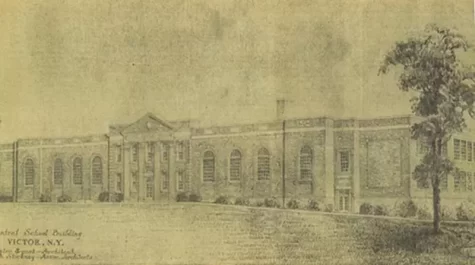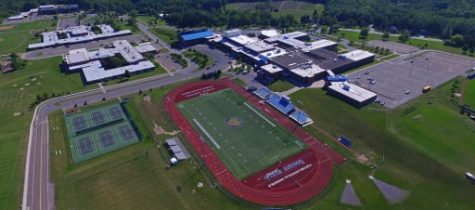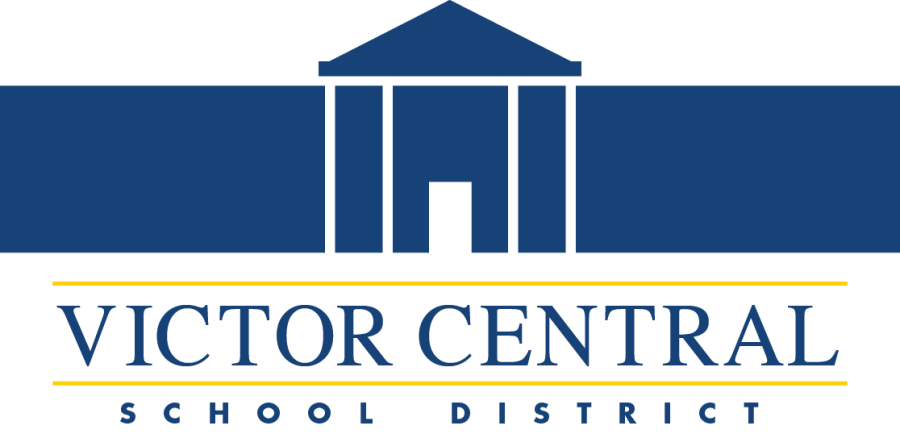Victor: Growing School, Growing Budget?
It may come as a shock to many that Victor hasn’t always been the large school it is now, encompassing one-hundred-sixty-six acres and harboring class sizes close to three-hundred-fifty, Victor has came a long way from its humble beginnings. The entirety of Victor Central Schools (VCS) used to just be the Early Childhood School (ECS), beginning in 1941 it wasn’t until years later that Victor decided to build another school to account for its growth. Flash forward over eighty years and VCS is now home to over four thousand students and over four-hundred-fifty staff members.
Though Victor shows no sign of stopping. With all-time high class sizes, Victor will need to keep updating its buildings and grounds to be able to hold its plethora of students.

Along with increased enrollment comes increased costs. While the high enrollment (class sizes now reaching up to three-hundred-fifty students) drives “the need for additional classroom space and additional athletic fields” according to Chris Marshall, Head of Buildings and Grounds for the district, it also drives costs.
And the man bearing the responsibility of sorting it all it out is our Assistant Superintendent of Business, Derek Vallese. Vallese started his career originally in public accounting, eventually working his way to be Treasurer for Albion due to wanting to spend more time with his son. He then applied for his current position at Victor in December 2019, landing the job and becoming Assistant Superintendent. A large portion of his job involves the handling of the school budget, something that community stakeholders view as a heated topic of debate, especially in recent years. While many tax payers have been concerned in recent years over the growing budget and breaking into the tax cap, the Assistant Superintendent assured me it’s nothing to be worried about.
He explained that heightening costs recently are due to the high inflationary period and cost of living currently affecting America which drives up the price of utilities and the minimum wage. These things shouldn’t keep increasing at the rate they are, which most likely ensures the district won’t have to keep expanding the budget at current rates and breaking into the tax cap. This is different from what many might have thought, that because of the growth of Victor, the budget will keep increasing, as the need for additional space would be ever present. Though this isn’t the case, Vallese forecasts (along with the help of a consultant and a look at housing in Victor) that enrollment sizes will stay steady for quite some time.
He explained the steady enrollment by saying, “What the data found was that families are moving into Victor into the affordable starter homes and as the families grow, they’re moving into these new bigger homes…and then they’re having their kids age out then the process starts over again.” The process that causes enrollment is cyclical and steady rather than increasing and out of control. What VCS really saw over the past few years is rampant building of new spaces and resources for students that was much needed. Now that the district is caught up, regular improvements will take place, rather than a large swath of building coming at once.

This growth also occurred at the staffing level. Dorothy Diangelo, Assistant Superintendent of Human Resources and in charge of hiring new staff, said that, “We’ve had large number of staff acquired over the past few years, we’re going to see some areas where that will level out because we were appropriately staffed.” Not only will the construction of student spaces begin to decrease and remain steady, but this trend will also be seen within hiring.
Due to these hikes it may have seemed like in recent years that the district weren’t aware of how tax increases may affect the community, Vallese also assured me that they (those forming the budget) are, “always thinking in the back of our minds, is this too much too ask for the community?” The relationship between community shareholders and the district is one Victor Schools heavily prizes, as Vallese said, “they are the one bearing the costs.” Evidence of this is already seen in the fact that Victor spends roughly five thousand dollars less per student every year than several of their counterparts in the area, yet remains as a top district in the state in terms of education. Working towards efficiency so that the district may keep costs low for those holding residence in the bustling and growing town is vital.
With Victor expanding, both Vallese and Diangelo are very optimistic for the future. The Assistant Superintendent of HR says Victor is, “on the precipice of big things” and the Assistant Superintendent of Business wants to see Victor be the leader in the area, one other schools can look up to. With plans of adding forty thousand square feet of space to the high school in the next few years, applicants increasing, and a confident staff in place, Victor is indeed on the verge of “big things”. The district has changed plenty even in the past five years, it’s exciting to think about how much Victor can do just in another five or even ten years. Just as the administration is hopeful for the future, you should be too!








William Martz • Dec 8, 2023 at 7:46 pm
Enrollment at Victor has been pretty steady since about 2012. It will decline as class sizes decline in the coming years. The 2024 graduating class is 349 and the average of grades 1 through 5 is less than 310 students. Just because the tax base and overall population is growing does not mean that VCS enrollment is increasing and further expansion and tax increases are justified. (Source: NYSED)